Keynote Speakers
|
Fiction and the Indigenous Experience of War
Joseph Boyden
|
|
Joseph Boyden, an internationally acclaimed Canadian writer, finds inspiration in the heritage and culture of the First Nations. He is the recipient of a number of literary awards. His first novel Three Day Road, an international best-seller published in 2005 and translated in over 15 languages, focuses on the indigenous experience of war, taking the reader through the fields of Flanders in World War I and back to Northern Ontario. His other work includes a collection of stories, Born With a Tooth (2001), the best-selling novel Through Black Spruce (2008), set in contemporary times in Northern Ontario, and works in non- fiction. His latest novel, The Orenda, published in September 2013, explores the brutal realities of 17th century Canada. It was short-listed for the Governor-General Award. Joseph Boyden is currently a writer in residence at the University of New Orleans where he teaches creative writing.
|
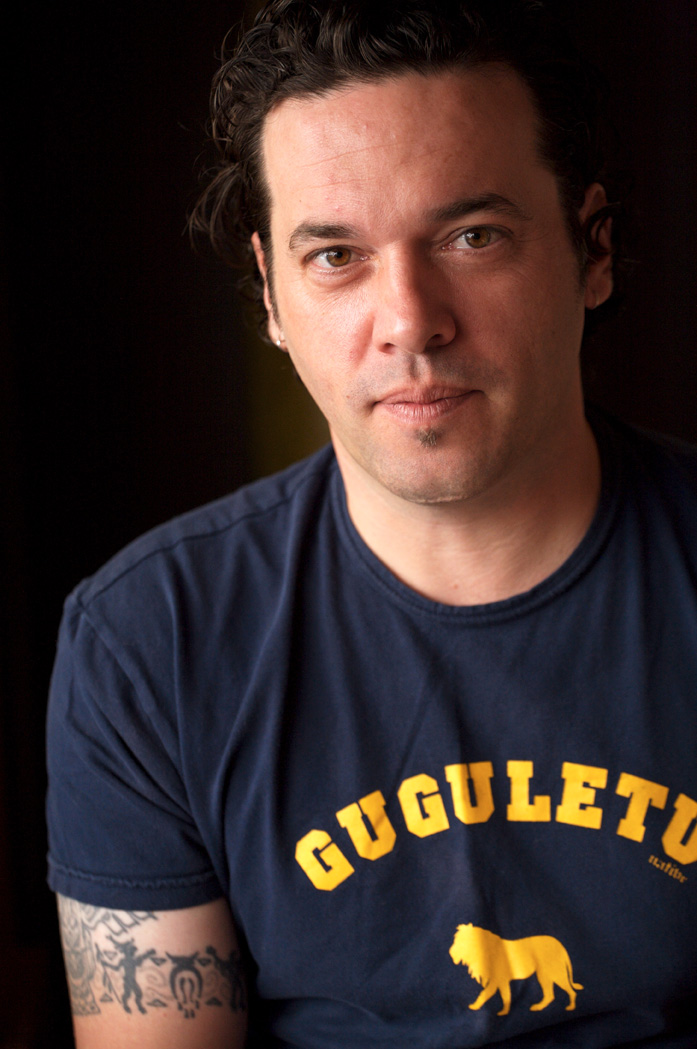
|
|
|
|
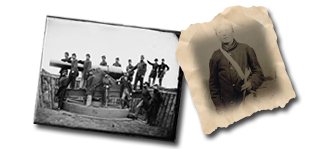
|
|
Entrenched positions: the First World War in British Popular Culture
Mark Connelly Professor, University of Kent, Royaume-Uni Professor of Modern British History, Convenor of War Studies Programme, School of History, University of Kent, Canterbury
|
|

|
Mark Connelly is Professor of Modern British History at the University of Kent. His research interests focus on Britain and conflict and he is particularly interested in the memory of war, and the image of the armed forces in British and Commonwealth popular culture. His publications include The Great War: memory and ritual (2002); We Can Take It! Britain and the Memory of the Second World War (2003); Steady the Buffs: a regiment, a region and the Great War (2008) and The Edwardian Army: recruiting, training and deploying the British Army, 1902-1914 (2012). He is currently working on a study of British Instructional Films and its 1920s reconstructions of First World War battles.
|
|
This paper will look at the way the First World War has impressed itself on British popular culture since 1919. It will explore many forms of representation including memorials, paintings, posters, novels, children’s literature, poetry, music, theatre, radio, film and television. A key issue will be the extent to which a middle class perspective of the war has dominated its representation in popular culture, and the degree to which the image has altered since 1945. The paper will argue that in the twenties and thirties the key issue was coming to terms with loss and the search for consolation and affirmation. This perspective altered after the Second World War as the conflict gradually became both a metaphor for, and an explanation of, British decline. Arising out of this discourse was an increasing focus on the shell-shocked and the physical and emotional damage caused by the war as was seen most strongly in Pat Barker’s Regeneration trilogy. Since the huge success of this novel series, and others of a similar genre, the focus has moved on with a central desire to rehabilitate others deemed marginalised or forgotten such as women and imperial troops. The paper will conclude by asking whether this new agenda is likely to achieve its aims and the extent to which the First World War has retained its place in British popular culture.
Top
|
|
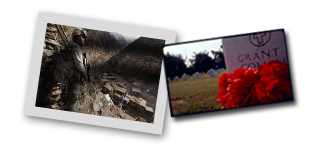
|
|
Quand le soldat canadien raconte l’Afghanistan : mises en abîme de récits de guerres antérieures dans le témoignage contemporain
Stéphanie Bélanger Professeure, Royal Military College of Canada
|
|
Stéphanie A.H. Bélanger, PhD, is the Associate Scientific Director of the Canadian Institute for Military and Veteran Health Research, the co-editor of A New Coalition for a Challenging Battlefield (CDA Press 2012) and of Shaping the future (CDA Press 2011), as well as of Transforming traditions (CDA Press 2010). She is associate professor at the French Department of the Royal Military College of Canada where her research focusses on War Testimony and Soldier Identity. She also specializes on the Representation of the Warrior through Just War Theories, topic on which she published the monograph Guerre, sacrifices et persécutions (Paris: Editions l’Harmattan, 2010). Active researcher, she co-chaired three colloquiums and she is sitting on the board of a fourth and fifth one; she frequently presents conferences at the national and international level as well as publishes articles and chapters in peer reviewed journals and books. She is co-chair of the Kingston Garrison Diversity Advisory Group for Persons with Disabilities since 2010 and she serves as a logistics officer in the Naval Reserve since 2004.
|

|
|
Jean Norton Cru affirmait que le but de la cueillette de témoignages de guerre est d’offrir « une image de la guerre d’après ceux qui l’ont vue de plus près » (2008, p. 25). La recherche actuelle stipule au contraire que le témoignage constitue, à l’insu du témoin, une reconstruction du réel (Guadart, 2004, p. 8; Rousseau, 2003, p. 275). Je postule pour ma part que loin d’être naïf dans sa démarche, le témoin appliquerait cette reconstruction du réel de façon volontaire, en vue de faire un récit qui offre à l’interlocuteur les paramètres d’une éthique qui semblent conformes à l’image qu’il se fait de la culture de la guerre actuelle, et ce, à la lumière des discours, des images, des films, etc., qui illustrent et qui racontent la participation de son pays dans les conflits du passé. Une analyse schématique des micro-récits de guerre dans le témoignage contemporain montre que la manière dont les militaires racontent leur propre expérience est en grande partie influencée par les films et les récits auxquels ils ont été exposés au sujet des conflits antérieurs : le passé guerrier est ici abordé comme un vecteur de la compréhension des guerres contemporaines. Mais, et c’est là tout le paradoxe de la représentation, ces micro-récits sur les conflits antérieurs sont eux-mêmes choisis et racontés à la lumière des sensibilités modernes; les guerres antérieures, et a fortiori la Première guerre mondiale, n’existent plus que comme recréation dans le discours des soldats contemporains. Les résultats montrent que l’expérience de la guerre est moins un facteur déterminant dans l’identité du soldat que le rapport de soi à l’historicité, laquelle se transforme selon l’expérience guerrière contemporaine.
Top
|
|
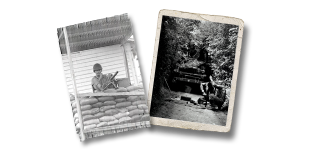
|
|
Vietnam and the Arts of Cartooning and Caricature
Stephen Whitfield Professor, Brandeis University, Boston, USA
|
|

|
Stephen J. Whitfield is Professor of American Studies at Brandeis University, where he has specialized in the intersection of politics and ideas in twentieth-century America. He has published two biographical studies of anti-war intellectuals, Scott Nearing: Apostle of American Radicalism (1974) and A Critical American: The Politics of Dwight Macdonald (1984). Professor Whitfield has also published a study of how politics affected American art and thought in the 1950s, in The Culture of the Cold War (1991, 1996). His articles have included historical analysis of how works of fiction illuminate the policies that the United States pursued in Vietnam. He has also served as a visiting professor of American Studies in Jerusalem, Paris and Munich.
|
|
The Vietnam War instigated a greater domestic crisis in the United States than any other episode in the twentieth century, except for the Great Depression; and one measure of the political chasm that emerged in the 1960s and early 1970s was the ferocity that some visual artists unleashed against American military intervention in Indochina. The caricaturist David Levine, operating on a grand and biweekly scale in the New York Review of Books, and the cartoonist Jules Feiffer, based weekly in the Village Voice, were especially noteworthy for the animus that they directed at Presidents Johnson and Nixon due to their commitment to the war, and due to the rationales of these Commanders-in-Chief its behalf. Even while the war was raging, both artists devoted themselves to other themes (literati and politicians, in the case of Levine, and the anxieties and delusions of sophisticates, in the case of Feiffer). But not since the satiric fury of the cartoonists who contributed to the Masses during the Great War did the skewering of the men responsible for the carnage overseas achieve such indignation through the pitch-perfect skill of the draftsmanship of Levine and Feiffer. While their political influence must remain speculative, their work constitutes a milestone in the evolution of radical criticism--and also suggests (in contrast to the First World War) how much broader the boundaries of uninhibited dissent has become.
Top
|
|
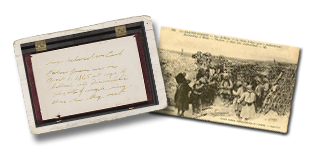
|
|
Stanley Spencer’s Quaint Memoirs of War
Liliane Louvel Professeure, Présidente d’ESSE, Université de Poitiers
|
| Liliane Louvel is emeritus Professor of British literature at the University of Poitiers and specializes in contemporary British literature and word/image relationship. She has written numerous articles on this particular subject and published five books on the interrelationship between word and image: L’œil du texte (Toulouse PUM 1998), The Picture of Dorian Gray, Le double miroir de l’art (Ellipses, 2000), Texte/image, images à lire et textes à voir (Rennes PUR, 2002), Le tiers pictural (PUR, 2010), Poetics of the Iconotext, Translation by Laurence Petit (edited by Karen Jacobs, Ashgate, July 2011). She has also edited several collections of essays on the subject: Word/image, EJES, …Like Painting, La licorne and published Actes du colloque de Cerisy : Texte/image nouveaux problèmes (with Henri Scepi), Actes du colloque de Cerisy Littérature et photographie (with Jean-Pierre Montier, Philippe Ortel and Danièle Méhaut), PUR, and Intermedial Arts (with Leena Eilitta and Sabine Kim), Cambridge Scholars Press. She has organized several conferences on the subject. Liliane Louvel also was the chairperson of the French Association of English Teaching Academics (SAES) until 2008. She was made a chevalier dans l’ordre de la Légion d’Honneur (2011) and is the current president of ESSE the European Association for the Study of English. |
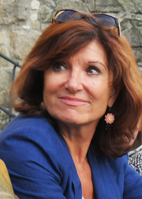
|
|
Le peintre britannique Stanley Spencer a donné une vision domestique et paradoxale de la Première Guerre mondiale dans laquelle il s’était engagé assez tardivement. Contrairement à d’autres peintres britanniques comme Nevinson, qui ont peint, en revenant, des œuvres pleines de l’horreur et du tumulte de la guerre et des tranchées, Spencer lui, dans le Burghclere Memorial entre autres, peint sa vision de la guerre alors qu’il était ambulancier en Macédoine. C’est donc une vision très domestique d’activités auxquelles se livraient les soldats : lecture d’une carte, préparation de la nourriture, ablutions, construction d’une croix rouge en galets, soins aux blessés qu’il peint. Le beau tableau Travoys... superpose une référence implicite au dispositif d’une nativité à l’arrivée de mules chargées de blessés placées en éventails face à une salle d’opération éclairée (Imperial War Museum London). Alors qu’il peindra plus tard des résurrections qui feront surgir du sol et des murs des morts en grand nombre, ici, point de vision unheimlich, comme si le peintre voulait rester en dehors de l’insoutenable, ce qui s’est passé pendant une partie de la guerre pour lui, resté en arrière. Il ira ensuite en Bulgarie avec un régiment du Berkshire. Cependant, The Resurrection of Soldiers elle, présente une vision de corps, de croix et de mules ou de chevaux, enchevêtrés. Il s’agit là d’une résurrection et donc de l’envers de la mort comme pour vaincre la dépression. Œuvre intéressante à décrypter, ce qu’il a fait lui-même en partie. Car les écrits de Spencer (carnets, lettres, essais conservés à la Tate Britain) sont également intéressants dans ce qu’ils disent de la vie dans le camp et de l’attente de la rencontre avec l’ennemi. Durant la Seconde Guerre mondiale, Spencer a reçu une commande du ministère de la guerre pour aller à Glasgow sur les chantiers navals et peindre le travail des ouvriers ; ces tableaux se trouvent, pour une grande partie, à l’Imperial War Museum de Londres. Là encore l’effort de guerre est dûment enregistré mais c’est l’arrière qui est dépeint et non l’engagement avec l’ennemi. Le travail et non la souffrance. Je propose donc d’étudier les œuvres et de voir en quoi elles offrent de la guerre une vision paradoxale qui témoigne à la fois de l’engagement et de l’approche si singulière du peintre.
Top
|
| |
|